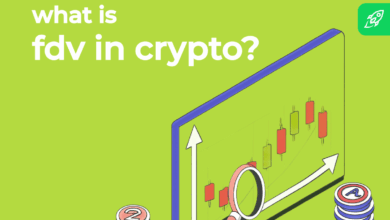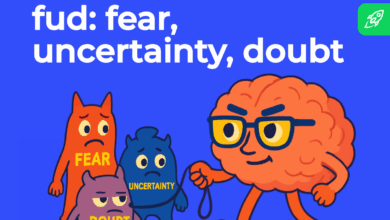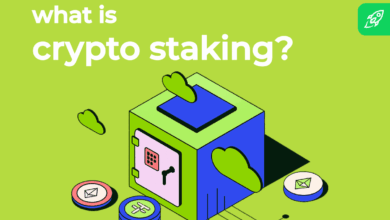Crypto and Globalisation: How Blockchain Technology Impacts the Global Market

- The use of blockchain for smart contracts has received increased attention media attention. Some refer to smart contracts as the ‘new black’ and the ‘new grail’.
- In 2018, the UN Secretary General issued a ‘Strategy on New Technologies’ and established the UN Innovation Network which has set out as its goal to amplify the use of blockchain in the operations of UN organisations.
Globalisation is a term used to illustrate the growing interdependence of the world’s economies and cultures brought about by cross-border trade in goods and services, technological innovations, and flows of investment, information, and people.
The world is divided into many countries which have built economic partnerships to facilitate commercial movements. The term became popular after the Cold War in the early 1990s. That was the starting point of shaping the global economy.
Globalisation includes some wide-ranging effects. These effects are complex and even politically oriented. In general, globalisation benefits commerce and society as a whole.
You probably wonder how crypto is related to all this; continue reading and you’ll discover why blockchain technologies are essential for globalisation to keep on going. If you’re interested in finding out briefly how the crypto world is entering other areas of life, check out this article: ‘Crypto’s new frontiers’.
A globalised economy encompasses policies that promote free commerce, international cooperation, and open borders. All these factors drive economic globalisation. Primarily, it is a good thing for many businesses.
Businesses are enabled to access lower-priced parts and raw materials, take advantage of emerging economies and lower-cost markets, along with participating in large markets worldwide.
Globalisation enhances supply chain management since products, materials, services, money, and information flow with ease across many borders. Technological innovations have accelerated these movements. The digital divide between more and less developed countries is practically closed.
Essentially, globalisation changes the way countries, businesses, and people interact. It impacts the nature of cross-border economic activity because it expands trade, opens up global supply chains, and provides access to many markets. Financial cooperation removes barriers set by geographic borders and political barriers by promoting cultural exchange of products, services, and information.
Global trade means that there is broad international competition. Healthy market competition enhances innovation. The whole movement impacts the way products are developed, how supply chains are managed, and how information flows seamlessly between numerous organisations.
It is almost impossible to think of globalisation without reflecting on the global financial crisis. We will now explain the 2007-2008 global financial crisis. Keep in mind that many factors are responsible for the emergence of a global crisis – it resembles a domino effect.
It is possible to identify a few reasons that gave rise to the crisis. First, the participation of foreign investors enhanced the fast growth of the asset-backed securities markets in the United States that were vital to the market panic. At the same time, European banks largely purchased asset-backed securities and also attained U.S. dollar funding.
Secondly, financial globalisation enabled fast growth in the balance sheets of multiple banks. This kind of growth happened simultaneously on two levels. Primarily, the size of globally-expanded banks grew very fast which made it hard for regulators to track such a progress and introduce appropriate policies and risk management approaches.
At the same time, the capacity of local banks and expanded lending enhanced credit growth in many countries. Additionally, emerging markets within the global financial system exposed some built-in weaknesses in credit markets.
In simple words, the trigger was a credit crunch that happened after a quick burst of asset-price and credit bubbles. The crypto community is already aware of the consequences of a bursting bubble – it all came tumbling down.
Technology and globalisation have always been close; there is a lot of literature stating they have evolved as a twin phenomenon. From the first industrial revolution to the current fourth revolution, technology assumed the role of a game changer.
The fourth industrial revolution or Industry 4.0 is represented by an intensive transformation of many industrial areas since it enables a globally connected environment of data, people, processes, assets, and currencies.
The 21st century is often illustrated as a watershed in technology development with innovation at centre stage since the world is pushing itself into a different financial system – an era of digital economy.
A 2008 World Bank report recognised that there is a firm link between technological progress and economic growth since technology helps in shrinking the divide between developed and developing countries.
In a rapidly evolving global economy, the integration of innovative technologies is reshaping traditional business models. One of the most transformative technologies is blockchain, operating on distributed ledger principles.
Additionally, a blockchain network serves as a ground for accessing Web3 products and services. The so-called ‘future of the Internet’ lies on the premises of blockchain technology.
Blockchain technology is propelling the exploration of new business models that leverage its capabilities to streamline supply chains, enhance data security, and create new venues for value exchange, thereby creating a novice financial system and impacting purchasing power around the globe.
The increase in globalisation and technology advancements, pushed blockchain into the spotlight since it has been recognised as a groundbreaking technology that could have a broad global impact.
Starting as a legacy of Satoshi Nakamoto, the path slowly led to the implementation by international organisations and countries – blockchain technology is, due to all its perks, reshaping the global financial system.
The whole crypto financial world lies on the same economic premises as centralised finance. It is a mistake to perceive that a new financial system wouldn’t lie on the same premises as the current one – in fact, many terms and theories that stem from traditional finance apply to the crypto ecosystem.
Blockchain and crypto are the buzzwords of the 21st century; there are many innovations and changes seen in financial technologies such as blockchain.
There are many reasons why blockchain and crypto are one of the hottest topics in the 21st century. The crypto environment provides a fully distributed system for cryptographically capturing and storing an immutable event log of transactions.
It brought to the table many technical innovations regarding the ownership of digital assets and presents a foundation for trust-free economic transactions. The popularity was recognised even by financial institutions as traditional intermediaries – many central banks over the globe became open to the adoption of blockchain and elements of cryptocurrency.
However, crypto has been opposing regulation for years now; or better to say, over-regulation and centralisation tendencies. There is a good reason for doing that. You can find out more about it by reading our ‘What is the threat to crypto from regulation?’.
Blockchain technologies, along with the entire crypto ecosystem, provide a viable alternative to the centralised financial system as it eliminates intermediaries, thereby lowering operational costs and increasing the speed and efficiency of financial services.
Basically, this means that blockchain technology has the power to alter global commercial interactions, adding to the pile of opportunities to re-imagine digital interactions and payment services within a trustless and permissionless environment.
Cryptos have not yet become part of mainstream society in total; there is still a lot of scepticism revolving around the crypto environment. For example, the former European Central Bank Vice President Vitor Constancio called Bitcoin a ‘tulip’ in reference to the 17th-century notorious bubble in the Netherlands. On the other hand, the People’s Bank of China stated that conditions are ripe to embrace cryptocurrencies, but the central bank wants full control.
If you are a crypto newcomer, you have probably noticed that the term decentralisation is being tossed around. There is an important reason for doing that. Blockchain technology excludes any ‘middleman’ and focuses on decentralisation as the main goal. If you are interested in finding out more, we suggest reading this article: ‘What is decentralisation & why is it important?’.
Most examples can be narrowed down to the question of why do we even need crypto – the main problem with the conventional system and fiat currencies can be seen in all the trust that is required to make it work. In simple terms, the crypto world is trustless, secure, and permissionless; it established a new level of financial inclusion.
Let’s talk about examples – blockchains, cryptocurrencies, globalisation, and digital assets are linked in various ways forming a new global network of value exchanges.
First, let’s explain what is the holy grail of cross-border payments – it refers to a solution that allows cross-border payments to be fast, cheap, settled in a secure settlement medium, and of universal reach. This type of holy grail was defined and set as a key priority by the G20. Blockchain technology provides cross-border crypto payments with all these traits, except the fact that it excludes an intermediary or the so-called settlement medium.
The trillion-dollar cross-border payments market is becoming ripe for change due to changing customer demands, the introduction of disruptive technologies, and rapid market growth. For example, in 2023 a new trend was noticed – remittances have been streamlined through seamless integration with mobile wallets. Many users receive money by bypassing traditional channels just by using their mobile phones.
Responding to market shifts requires new strategies. Traditionally, banks have been at the forefront of the cross-border payments market, led by a few dominant global correspondent banks. These correspondent banks are dominating the market which led to a variety of so-called ‘pain points’. Pain points are linked to a lack of transparency, long settlement periods, limited accessibility, and high transaction fees.
For example, a transaction from a local bank account in Austria to a bank account in Senegal can incur high transaction costs, depending on the initial transaction values and it requires a few days to settle. On the other hand, blockchain technology provides medicine for all these pain points but comes at the cost of removing intermediaries out of the picture.
From day one, SWIFT established common standards for cross-border financial transactions within a global banking network, managing to connect more than 11,000 financial institutions in more than 200 countries. Established back in 1973, the famous payment system is now becoming inefficient, costly, and overall archaic.
As mentioned above, international payments may take up to a couple of days; specifically, an average cross-border payment takes 3 to 5 days. This is not a business model that suits a globalised e-commerce era.
In contrast, blockchain technology enables secure and fast currency transfers. Security lies in the fact that records are immutable and transparent, meaning that they provide end-to-end visibility anywhere in the world. Blockchain makes it easy for people to receive or send money.
Even though SWIFT’s new global payments innovation (GPI) rests on similar principles such as unidirectional messaging, it still differs from the one used by any blockchain network.
International trade is a vital component of global economic development. Pain points of the whole globalisation process broadly refer to the structure of international trade and global supply management and value chains.
For example, a shipment from Kenya to Rotterdam can produce a big pile of papers, with costs of handling it higher than those of actually moving the containers. Even though we are living in a digital era, most business relationships are still being concluded in writing on paper, along with the creation of many policies and management structures. In modern literature, it has been referred to as a ‘contract overload’.
Blockchain technology introduced a way to resolve this by implementing smart contract technology. Smart contracts are digital agreements written in code and executed by protocols, decentralised consensus algorithms, and one-way hash functions.
Due to its main perks, blockchain-enabled smart contracts hold promises of accurately governing transactions, along with the capability to verify real-world data and trigger important events such as due payment.
Due to the immutability and transparency of distributed ledger technologies, smart contracts can guarantee contractual performance by automating the whole process while reducing all costs.
Even though smart contracts hold important promises for a seamless future of international trade, it has been claimed that this matter should be explored further before officially implementing it. The question of whether self-executing contracts can currently comprehend all the implications associated with cross-border trade remains.
Global supply chains are typically associated with complexity and a lack of transparency. They are often hostage to a number of factors such as geopolitical tensions, inflation, natural events that disrupt shipping, critical product stockouts, and many more.
Given all these possible events, companies dealing with supply chain efficiency are rethinking their strategies that could resolve issues related to source, delivery and return processes. Supply chain management includes the need to predict and mitigate vulnerabilities within that chain. In particular, the main drivers of effectiveness can be spotted in predicting risks, enabling traceability, and enhancing trust in a multi-stakeholder environment.
By implementing a blockchain-based supply chain, companies can efficiently digitise physical assets and create a decentralised, immutable record of all transactions across the end-to-end value stream. Basically, blockchain technology is capable of creating an immutable and transparent record of every step in the supply chain.
For example, when paired with Internet-of-Things (IoT) devices and radio-frequency identification (RFID) tags, participants can monitor real-time movements and conditions of goods, either perishable or non-perishable.
It is worth noting that smart contracts provide in this case another mechanism for enhancing trust. By automatically executing a verifiable code that implements contractual terms and conditions, smart contracts guarantee that all participants in the supply chain adhere to the terms defined in their agreement. That makes any decision-making process much easier within supply chains.
Further, there is an interesting implication of blockchain in the context of port logistics. Specifically, blockchain technology provides a promising ground for the development of port logistics to improve the effectiveness of current supply processes. Using blockchain technology can be spotted in the potential process of shipping containers utilising smart contracts and IoT devices to enable automation of logistics processes for cargo delivery.
Transparency of the global supply chain is important in the context of consumer welfare. It has been a pain point of consumers worldwide since more thought is given to production methods and food components.
For example, meat can be labelled as beef but it is often a mix of different animals. Consumers cannot know the true origins, nutrition stats and value of a product if there is no transparency and traceability. Blockchain technology can enhance consumer welfare by enabling them to see the products from the very beginning to the purchase.
Identity management refers to a complex process that includes identification, authentication, and authorisation of individuals to access systems, networks, and applications. It is set in place to mitigate risks of fraud, data breaches, and identity theft.
In the digital era, data is the ‘new oil’. Therefore, a variety of businesses are seeking blockchain-based and decentralised approaches to identity management and verification due to its tamper-proof feature.
When it comes to identity verification, distributed ledger technologies come along as a viable solution for the Identity and Access Management (IAM) market. Given that blockchain-enabled technologies provide secure management and storage of digital IDs, it gives power back to the end-user through a self-sovereign identity (SSI).
Blockchain identity solutions have already been used in practice. Back in 2018, the World Food Program (WFP) implemented an Ethereum-based identity system to provide humanitarian aid.
Another real-world example can be found within educational services. While education app development is the thing that transferred education from traditional classrooms to real-time accessible mobiles, blockchain has taken it to another level. The technology has simplified the entire process of record keeping and verification of certificates.
The development of the Internet blurred the lines between the digital and virtual realms. The SSI system is kind of a digital passport; it utilises decentralised identifiers to provide verifiable digital identities in a decentralised manner.
The blockchain identity management market is on the rise. It is estimated to grow up to $11.46 billion in 2026. The reason behind such growth lies in its importance and capability to solve contemporary identity-related issues such as inaccessibility, data insecurity, and the occurrence of fraudulent identities.
Let’s take a look at how blockchain technology helps in resolving these issues.
We have already mentioned that there is a big divide between developed and developing countries that is being closed by emerging technologies. Now think of the fact that 1.1 billion people worldwide have no proof of identity and half of them at least belong to the poorest people on the planet.
Burdensome identification processes usually require a lot of paperwork, expenses, and a lack of access. However, the maths is simple – if you don’t have a personal identity, you cannot access the financial system, get a passport, apply for jobs, or even get an elementary education.
Let’s get this straight – blockchain technology is not a miracle worker. Giving a personal identity to all these people is a tough job. However, blockchain technology would assume the role of a helping hand, making the whole process smoother, faster, and cheaper.
Contemporary digital identity systems are accommodated on government databases that typically include a few points of failure. Broad, centralised systems that contain a big pile of personal data are very appealing to cyber criminals.
In fact, a few studies have demonstrated that personal data is the most targeted type of data. For example, 97% of all breaches back in 2018 were related to personally identifiable data.
Even though regulators worldwide created stringent data protection laws, it is only a temporary cure. The tamper-proof nature of blockchain has the potential to produce a more secure database of digital identities. In contrast to other technologies, it comes with less technical issues.
The link between digital and real-world identities is typically weak; in other words, it is not hard to create a fraudulent identity. Fake identities contribute to counterfeiting and fraud, leading to a large number of users losing their revenue.
Most people are aware of data breaches in various organisations, yet identity theft is moving at a rapid pace. According to some research, it happens every two seconds and presents a crucial user complaint.
Advancements in cryptography lead to the creation of tools to build new identity systems based on the concept of decentralised identifiers, along with the self-sovereign identity.
Given that blockchain includes a decentralised ledger holding virtual items that are secured by cryptographic keys, it becomes challenging for perpetrators to manipulate the stored data. Since it is a peer-to-peer system, malicious actors would have to intrude on every system to take over the network which is very hard or even impossible. Even if they succeeded in such a task, all changes would be reflected in the blockchain system.
Businesses worldwide are investing in digital transformation to become more efficient. Blockchain technology is on the brink of an investment revolution since a key part of this occurrence includes a stake for many companies to remain competitive.
Blockchain technology shares some similarities with the early Internet. There is still a lot of trial that needs to happen along the way, yet its future potential is huge, along with an ecosystem that is expanding at a fast pace.
Investment and fundraising platforms that implement blockchain technologies enable businesses to raise funds from a global pool of investors, regardless of their geographical location. This delivers a wider financial inclusion and a diverse investor base.
New technologies allowed assets such as art, commodities, real estate, and others to be tokenized and traded on crypto platforms. It introduced a totally new form of digital ownership and simplified digital trade. This feature enhances the ability of many people to participate in a wide range of investment opportunities.
There is another important perk for investment activities – blockchain-based tokens can facilitate the creation of secondary markets, enabling investors to trade their assets more smoothly. In other words, liquidity is being introduced to assets that may traditionally be illiquid. Investors are provided with more flexibility to exit their positions.
Investing is kind of going through a democratisation phase. Initial Coin Offerings (ICOs), Security Token Offerings (STOs), and other blockchain-based crowdfunding mechanisms have democratised investment and opportunities. In simple terms, start-ups and crypto projects around the globe can access capital directly from a wide investor base.
Since crypto is bypassing traditional intermediaries such as brokerages or investment banks, it reduces fees associated with investment and fundraising transactions.
A Decentralised Autonomous Organisation (DAO) enables people to be a part of a group without putting anyone in charge. Governance is solely backed by technology and the financial stake of token holders.
The term organisation is usually understood as an entity comprising multiple people acting towards a common purpose. A DAO source code is deployed in a blockchain with smart contract capabilities such as Ethereum. Typically, it is linked to a public blockchain.
DAOs gained popularity fast, and regulators recognised their importance and expansion. This type of organisation soon became a legal entity under the legal framework of many countries.
In terms of globalisation, it has passed the speed test. For example, UkraineDAO managed to raise $7 million in crypto donations from more than 3,000 people worldwide for the country’s defence.
As a fundraising platform, it presents an example of good practice because it manages to show how members around the globe with a common purpose can quickly distribute funds. In contrast to traditional organisations that were at times slow and financially inefficient, blockchain technologies managed to find an effective way of transferring funds.
It has been stated that blockchain technology and the use of cryptocurrency can remove currency conversion barriers that have long been barriers to seamless international transactions. Traditional methods required navigating complex currency exchange processing that usually led to high fees and delays.
In other words, direct peer-to-peer transactions simplify the whole process and eliminate the need for multiple currency conversions. It has been claimed that in the future cryptocurrency could become a common denominator for value exchange.
Central banks all over the world have been in the process of adopting the elements of cryptocurrency to come up with Central Bank Digital Currencies (CBDC). Therefore, crypto payments may have the potential to change how the global economy runs.
However, Central Bank Digital Currencies are not really cryptocurrencies; they are rather blockchain-based fiat currencies as a digital form blockchain-powered fiat money with legal tender status. Merely, it can be utilised as a complement or substitute for physical fiat currencies, along with becoming an alternative to traditional banking deposits.
It is not as easy as it seems. Even though blockchain technology has a big potential and real-world implications when it comes to the process of globalisation, cryptocurrencies are still put on hold when it comes to becoming the ruler of a financial global network.
Let’s imagine a world where crypto is widely accepted as a means of purchasing products and services. You can go to the store and buy desired goods with a certain cryptocurrency. The seller receives the crypto payment and sells it to get an equivalent of a fiat currency.
It is all fun and games when happening on an individual level. Now imagine a broad number of sellers selling the crypto to recover the fiat money. The more crypto is accepted, the more selling pressure is on prices. In simple terms, it is not sustainable to transact in a currency that has to be referenced back.
Now consider all the vendors selling the crypto to recover their dollars. That is quite a bit of selling pressure. The more broadly accepted crypto becomes for transactions, the more selling pressure there is on crypto prices.
You probably wonder why we didn’t mention the possibility of receiving the cryptocurrency directly rather than the fiat currency equivalent. In theory, it would be possible and items could be priced directly in a single cryptocurrency.
The main goal of the crypto movement is to eventually replace the traditional financial system with a new and better one, but the transformation is moving one step at a time.





